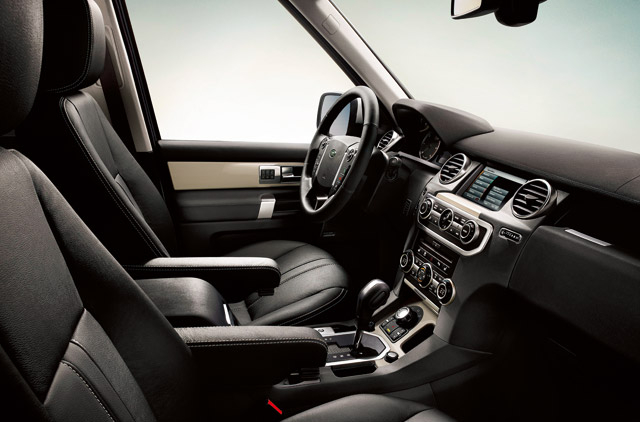
If I were to list the key features that make a 4x4 a great off-roader, it would be good ground clearance, a powerful, reliable engine and transmission, strong axles and suspension and the right tyres.
Of course, these features can always be upgraded but if you are going to upgrade every part of the vehicle, it kind of defeats the purpose of buying a 4x4 in the first place.
Look at it this way: the level of upgrades usually depends on how ambitious you are and how deep your pockets go but what is good to remember here is that most aftermarket parts - those that are worth installing - cost as much if not more than the original parts.
So, coming back to the pure intention of wanting to enjoy a 4x4.If the vehicle meets most of your major off and on-road requirements, just stick with it and dispense with the tinkering. Which, by the way, also helps ensure your dealer can still carry out services on your vehicle.
The 2011 Land Rover LR4 with its five-litre V8 engine comes close to being a pure off-road vehicle in all ways. It's got a powerful Jaguar engine that outputs a peak 370 horsepower and 510 Nm of torque, which is well above average for most sand driving situations (this is something I wanted to check out for myself and more of that later in the article).
In terms of acceleration on tarmac, it is as quick as the Jaguar XF on a straight line. And when it comes to corners and lane changes, the laws of physics become obvious owing to the tall design of the LR4.
The interior of the LR4 is classy and similar to the Range Rover. The sound system and navigation are functional and easy to use. The seats are high and the view from the large windows is better than most other 4x4s out there. Passengers in all three rows can enjoy being comfortably seated under a glass roof, which enhances the whole 4x4 experience. The LR4 is spacious and leg room ample. The third row seats can be folded to increase the luggage capacity if needed.
The various off-road settings near the gear lever are easily accessible and simple to use. The hill descent control is now complemented by a Gradient Acceleration Control feature, which engages depending on the slope of travel. In extreme circumstances, it can help slow the car down to 5km/h until the driver regains control.
This feature is a fallback option that comes into play when the hill descent assistance is not turned on.
Managing the dunes with ease
The test drive gave me the chance to find out just how well the LR4 performed in the desert. Once on the sand, the capabilities of the V8 engine became apparent. The vehicle has effortless climb abilities though I was a bit wary about the approach angles while taking the run-up towards the sand dunes because the front fenders did seem low. But surprisingly, the LR4 managed most average dunes with ease. The terrain selector in sand mode ensured the traction control and ABS systems were optimised for desert driving.
The LR4 does not come with side steps as standard. This means that even during regular on-road use, it's somewhat difficult to get in and out of the vehicle. Clearly, unless one wants to restrict the LR4 to tarmac use, it's necessary to ensure that side steps and tow points at the front and rear of the vehicle are fitted before venturing off-road.
Great design heritage shows
Asides from this, the LR4 looks like it's got it all figured. The Land Rover's legendary prowess and all-terrain DNA are evident even on this car, which is a lot more tarmac-friendly than its first cousin - the Defender.
The height-adjustable suspension makes it convenient to lift and lower the vehicle depending on the terrain. How durable this suspension would be for regular sand dune driving is something only a few years of regular off-roading would be able to answer.
On city roads and on the highways, the LR4, with its six-speed automatic transmission, is smooth and quiet. It has a lot of V8 power at its disposal with an engine that's very responsive. The vehicle does not throw its weight around at low speeds and is agile enough to negotiate city roads with an easy charm. However, because the suspension is soft and comfort-oriented - and given the LR4's tall stance - highway driving can be a little wobbly during quick lane changes.
The 2011 model claims to have a new and improved suspension for better handling and also an improved ‘understeer control' system.
I'm not sure if I was able to notice any changes compared to the earlier model, because the overall ride characteristics felt just the same.
An interesting feature introduced in the 2011 LR4 is the Land Rover Homelink. This transmitter device learns frequencies that open gates and garage doors that are remote controlled, therefore eliminating the need to press the remote control each time you need to enter or exit. This is great for people like me who have a tendency to misplace these controls!
So, all in all, the character of the LR4 remains intact. It continues to follow in the footsteps of the unique Land Rover tradition, which has built up a huge fan base over the years.
The LR4 offers a luxury aspect for those who want something that falls between a Range Rover and a Defender.
Inside info
- Engine: 5-litre V8 engine
- Max output: 370 horsepower with 510 Nm of torque












